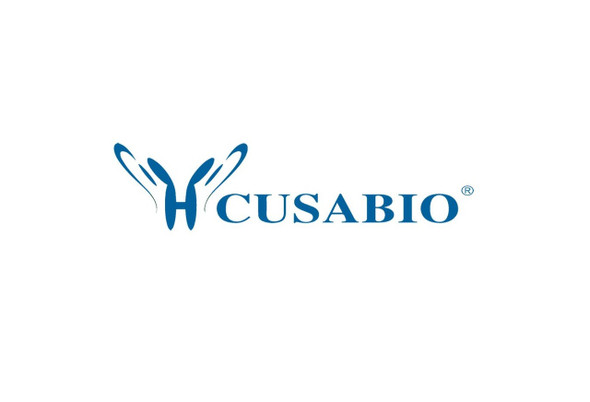Cusabio Active Proteins
Recombinant Human C-C motif chemokine 20 protein (CCL20) (Active) | CSB-AP000931HU
- SKU:
- CSB-AP000931HU
- Availability:
- 5 to 10 Working Days
Description
Recombinant Human C-C motif chemokine 20 protein (CCL20) (Active) | CSB-AP000931HU | Cusabio
Protein Description: Full Length of Mature Protein
Alternative Name (s) : Beta-chemokine exodus-1, Liver and activation-regulated chemokine, Macrophage inflammatory protein 3 alpha, MIP-3-alpha, Small-inducible cytokine A20
Gene Names: CCL20,LARC,MIP3A,SCYA20
Research Areas: Immunology
Species: Homo sapiens (Human)
Source: E.Coli
Tag Info: Tag-Free
Expression Region: 27-96aa
Sequence Info: ASNFDCCLGY TDRILHPKFI VGFTRQLANE GCDINAIIFH TKKKLSVCAN PKQTWVKYIV RLLSKKVKNM
Biological Activity: Fully biologically active when compared to standard. The biological activity determined by a chemotaxis bioassay using human T-lymphocytes is in a concentration range of 10-50 ng/ml.
MW: 8.0 kDa
Purity: >97% as determined by SDS-PAGE and HPLC.
Endotoxin: Less than 1.0 EU/µg as determined by LAL method.
Relevance: Chemotactic factor that attracts lymphocytes and, slightly, neutrophils, but not monocytes. Inhibits proliferation of myeloid progenitors in colony formation assays. May be involved in formation and function of the mucosal lymphoid tissues by attracting lymphocytes and dendritic cells towards epithelial cells. C-terminal processed forms have been shown to be equally chemotactically active for leukocytes. Possesses antibacterial activity E.coli ATCC 25922 and S.aureus ATCC 29213. {ECO:0000269|PubMed:12149255}.
PubMed ID: 9013939; 9038201; 9129037; 11352563; 15815621; 15489334; 11035086; 12149255
Notes: Repeated freezing and thawing is not recommended. Store working aliquots at 4℃ for up to one week.
Function: Acts as a ligand for C-C chemokine receptor CCR6. Signals through binding and activation of CCR6 and induces a strong chemotactic response and mobilization of intracellular calcium ions
Involvement in disease:
Subcellular Location: Secreted
Protein Families: Intercrine beta (chemokine CC) family
Tissue Specificity: Expressed in the seminal plasma, endometrial fluid and follicular fluid (at protein level) . Expressed predominantly in the liver, lymph nodes, appendix, peripheral blood lymphocytes, and fetal lung. Low levels seen in thymus, prostate, testis, small intestine and colon.
Paythway: Chemokinesignalingpathway
Form: Lyophilized powder
Buffer: Lyophilized from a 0.2 μm filtered concentrated solution in 20 mM PB, pH 7.4, 100 mM NaCl.
Reconstitution: We recommend that this vial be briefly centrifuged prior to opening to bring the contents to the bottom. Please reconstitute protein in deionized sterile water to a concentration of 0.1-1.0 mg/mL.We recommend to add 5-50% of glycerol (final concentration) and aliquot for long-term storage at -20℃/-80℃. Our default final concentration of glycerol is 50%. Customers could use it as reference.
Uniprot ID: P78556
Uniprot Entry Name: CCL20_HUMAN
HGNC Database Link: HGNC
UniGene Database Link: UniGene
KEGG Database Link: KEGG
STRING Database Link: STRING
OMIM Database Link: OMIM









